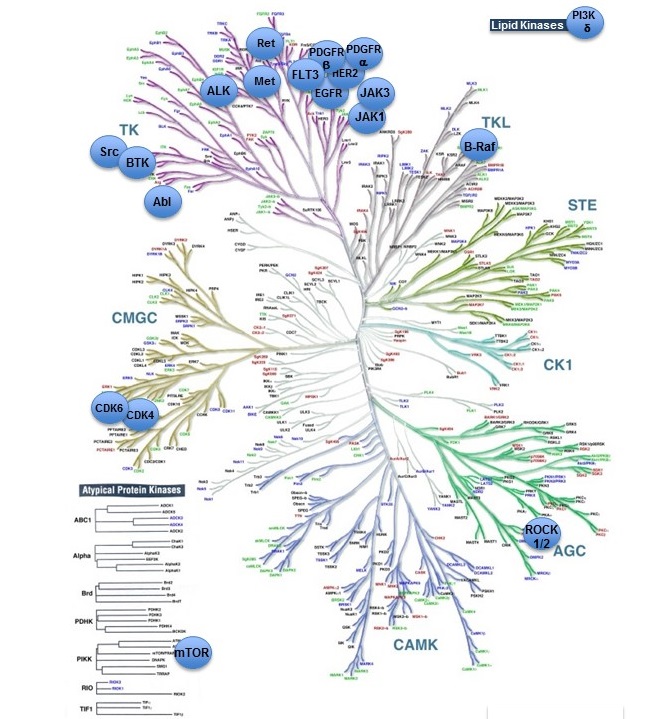GtoPdb is requesting financial support from commercial users. Please see our sustainability page for more information.
Overview
G protein-coupled receptor kinases, epitomized by βARK, are involved in the rapid phosphorylation and desensitization of GPCR. Classically, high concentrations of β2-adrenoceptor agonists binding to the receptor lead to the consequent activation and dissociation of the heterotrimeric G protein Gs. Gαs activates adenylyl cyclase activity, while Gβγ subunits perform other functions, one of which is to recruit βARK to phosphorylate serine/threonine residues in the cytoplasmic tail of the β2-adrenoceptor. The phosphorylated receptor binds, with high affinity, a member of the arrestin family (ENSFM00250000000572), which prevents further signalling through the G protein (uncoupling) and may allow interaction with scaffolding proteins, such as clathrin, with the possible consequence of internalization and/or degradation.
Subfamilies
|
Families that contain targets of relevance to immunopharmacology are highlighted in blue |
|

|
|
How to cite this family page
Database page citation:
G protein-coupled receptor kinases (GRKs). Accessed on 23/12/2025. IUPHAR/BPS Guide to PHARMACOLOGY, http://www.guidetopharmacology.org/GRAC/FamilyDisplayForward?familyId=283.
Concise Guide to PHARMACOLOGY citation:
Alexander SPH, Fabbro D, Kelly E, Mathie A, Peters JA, Veale EL, Armstrong JF, Faccenda E, Harding SD, Pawson AJ, Sharman JL, Southan C, Davies JA; CGTP Collaborators. (2019) The Concise Guide to PHARMACOLOGY 2019/20: Enzymes. Br J Pharmacol. 176 Issue S1: S297-S396.







Loss-of-function mutations in RHOK or retinal and pineal gland arrestin (SAG, P10523) are associated with Oguchi disease (OMIM: 181301), a form of congenital stationary night blindness.